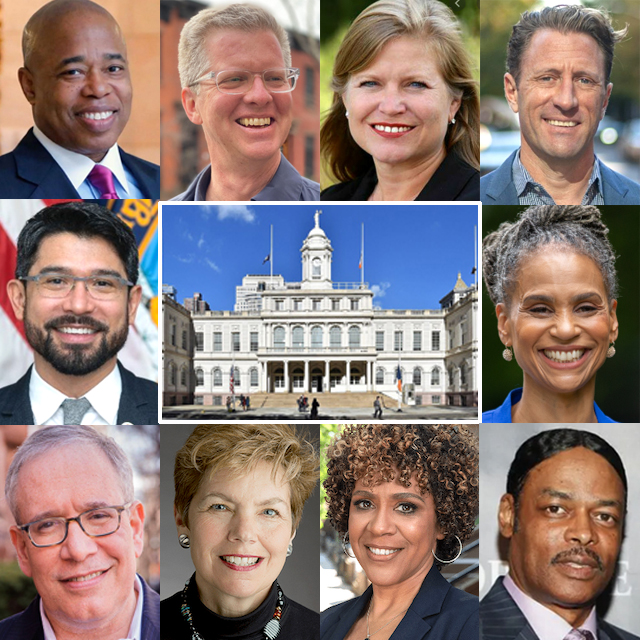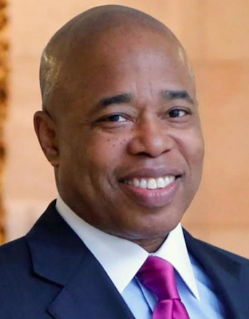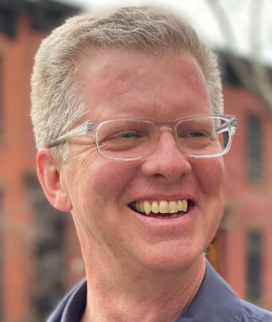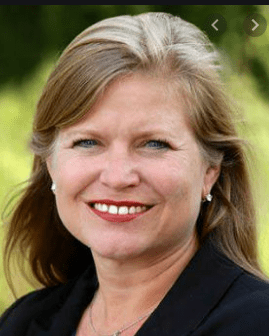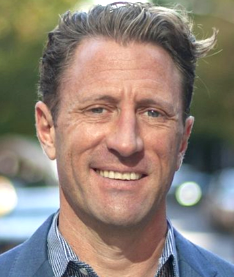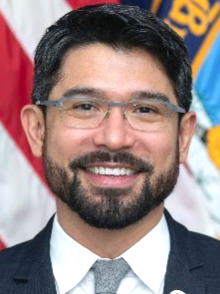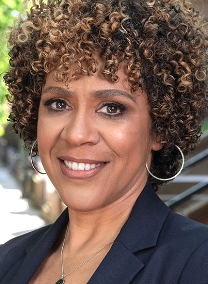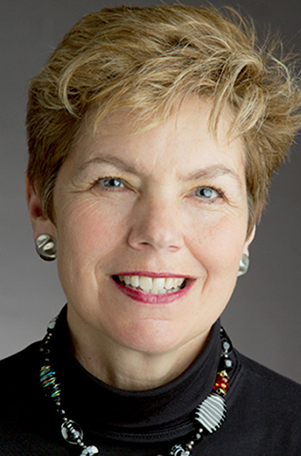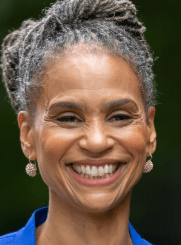
Attention, vehicle-owning freeloaders: Those vying to be our next mayor have very different — and much stronger — ideas about curbside uses than the current occupant of Gracie Mansion.
In their answers to candidate questionnaire, 10 of the hopefuls jostling to succeed Bill de Blasio offered proposals including metering many of the city's three million free parking spots, residential parking permits, an expansion of neighborhood loading zones, centralized trash collection, and more. They also forwarded a variety ideas about what to do with the revenue the city would collect from such enterprises.
This is the second of daily rollouts of the candidates' thoughtful and often-voluminous answers to our questions, which should provide safe-streets activists with a roadmap of where the hopefuls stand on our issues. At the end of the series, we'll post all seven installments in one place for easy reference. (And don't miss Monday's installment, which included short bios of all the candidates.)
Here was our question:
New York City has an estimated three million free parking spaces. Do you support metering them in order to create a permanent revenue stream? If so, would you dedicate that money, in a lockbox, for transit and/or streetscape improvements?
Here is what they said:
ERIC ADAMS: I support the expansion of ParkSmart, in a locked-box commitment to mass transit.
The revenue gathered in a specific community district should be earmarked to prioritize investments in that community district itself.
This would also be good for the business community, allowing for greater turnover for customers that are visiting commercial corridors.
This line left intentionally blank for spacing.
This line left intentionally blank for spacing.
This line left intentionally blank for spacing.
SHAUN DONOVAN: We need to think of street space and design completely differently because we are dealing with a valuable, finite resource, so we must get more creative. My first management principle as mayor will be to use new technologies that optimize the use of curb space and provide durable, innovative solutions to the challenges of delivering reliable basic services. For example, why can’t New York have centralized trash collection, at least in certain places? There has to be a better way than the walls of trash in front of large residential buildings that block our sidewalks. It is a question of vision and execution, and I can provide both.
On parking, I support a more rational approach to the curb that accounts for its multiple demands, which has only become more complex during the pandemic because of curbside dining and an ever-growing number of deliveries. In some places it makes sense to convert on-street space to flexible zones for deliveries and passenger pick-up and drop-off; in other places, it makes sense to explore expansion or increase of the price for metered parking. I would explore new ways — such as sensors or GPS data from the biggest fleets on our streets — to monitor the use of parking space and broadcast open spaces to make it easier to find parking for cars that need it.
In addition to on-street parking, I see an opportunity to reduce off-street accessory parking requirements for new real-estate developments and instead divert that money into a city-controlled transit fund. Parking garages are expensive to build and promote car ownership. That money would be better spent investing in a transportation system that benefits everyone and makes the city more resilient. My goal is to create a dedicated stream of funding for transportation projects that give the city more leverage when negotiating with the MTA.
As mayor I will be laser focused on transportation and improving the performance of the MTA, and one way to do so is for the city to generate its own money for transportation projects.
KATHRYN GARCIA: I will pilot residential parking permits to make on-street parking a privilege, not a right.
As a part of my Complete Streets program, we will use space currently dedicated to private cars for important functions like bike parking, trash collection, seating, and other community uses.
These amenities will improve New Yorkers’ experience of their city, help us integrate sustainable infrastructure, create new sources of opportunity for small businesses, and in turn provide a boost to New York’s economy.
This line left intentionally blank for spacing.
This line left intentionally blank for spacing.
ZACH ISCOL: Yes. would be impossible to make all of these spaces metered immediately, but one of my priorities as mayor would be to meter all parking that serves high-demand commercial zones. Currently, somewhere close to 95 percent of the city’s on street parking spaces are free. Where parking is not serving residents — but instead tourists and business patrons — pricing should be at least in line with current pricing ($3.50/hour below 96th Street in Manhattan and between $1.25 and $2.50/hour elsewhere) if not increased for highly trafficked business districts. These high-demand zones should be metered 24 hours a day, seven days a week, to take advantage of existing demand.
This said, we need to be conscientious about how we are aiding small businesses, especially those connected with hospitality and the restaurant industry. We must consider that MTA ridership remains down two-thirds compared to this time last year, and that many New Yorkers, especially those with existing medical conditions, may not feel safe taking public transit for some time. Now is also the time to explore residential parking permits, which we must get passed immediately, in order to encourage any commuters to utilize public transportation or alternative modes of transportation. This revenue will go back into programs to improve our roadways.
RAY McGUIRE: Did not answer.
CARLOS MENCHACA: Yes, I support metering all of the city’s free parking spaces. These three million parking spaces represent a huge portion of public land set aside for only a small segment of the public — car owners — many who come from out of the five boroughs. Metering these spaces at a fair rate, and dedicating this money towards MTA improvements would allow this public land to truly benefit the entire public. It would also remove the undue burden on working people who have had to consistently pay fare hikes to support the city’s train and bus system that our entire economy relies on.
Further, we know from reliable studies that comprehensive metering (as opposed to the partially metered system we have now) would significantly reduce traffic congestion and pollution by reducing time spent by motorists circling streets looking for free parking. As mayor, I will fully commit the DOT to comprehensive metering.
DIANNE MORALES: The problem with parking fees as a disincentive is that they disproportionately affect people by income and class. The problem with relying on fees as a revenue stream is that desired programs become dependent on the activity a fee intends to stop. Wealthy people will just absorb the cost and use the spaces. The fees generate a counter incentive to other vehicular mitigation efforts, to keep money flowing into the lockbox.
While certainly targeted metering should be pursued in some areas, the simplest way to have fewer parked cars is to have fewer spaces. We should redesign streets with more room for bike lanes, open street activities, or trees and green space. At the same time, my priority will be in expanding the safety and affordability of other modes of transport, specifically biking and public transit.
Improvements in access to public transportation should also prioritize expansion and improvement in working class and poorer communities, particularly in the outer boroughs. The last two subway expansions, at a cost of billions, Second Avenue and Hudson Yards, prioritized corporate and developer profits, not the needs of the people. We need real crosstown options for the outer boroughs, more reliable connections between neighborhoods and transit hubs, and safe, vehicle-free, avenues for bicycle paths.
SCOTT STRINGER: Priority No. 1 is repurposing curb and street space for pedestrians, bikes, buses, strollers, wheelchairs, restaurants, retail, and various public uses.
I’m open to more parking meters along commercial corridors, as well as residential parking permits. Parking space is valuable and we shouldn’t be giving it away to private automobiles for free.
I’m also open to a lockbox and I see the value in creating one, but let’s be honest, investing in transit and the streetscape is about leadership and priorities. Bad leaders siphon dollars out of lockboxes and only invest the bare minimum; good leaders go above and beyond.
We’re going to dedicate a huge amount of funding and resources to streetscapes, transit, and public space because it will be a chief priority in my administration — lockbox or no lockbox. I’m also going to bring major reforms to the DOT and DDC and improve coordination with the utilities so that we can reduce construction costs to make those dollars go farther.
LOREE SUTTON: I strongly support efforts to transition from a car-dominant culture to one that encompasses fewer vehicles fueled by fossil fuel, safer and more inviting spaces, thoroughfares for buses, for hire vehicles, bikes, & scooters as well as pedestrian passageways. This desired outcome will not happen on its own or by elected officials alone — it will require leadership and transparency at all levels; inclusive community engagement with diverse advocacy groups who have “skin in the game;” resources and public-private partnerships; and a commitment to bold visionary progress realized with iterative phased implementation and ongoing assessment.
Regarding the three million parking spaces, I would support the use of metering as one such measure to bring revenues in for ongoing operations and improvements, as well as to help facilitate the transition to a less congested and safer city. I support fair and balance initiatives which incentivize use of a broader range of transit options other than private vehicles and which discourage residents from keeping a car in the city. Creative design and urban innovation will be necessary to engineer how public spaces — roads, parks, streets, bridges, tunnels, sidewalks and plazas — can maximize benefits for all.
MAYA WILEY: In order to transform our transit system and our streets, we need to identify new revenue sources and make substantial investments.
I will actively explore proposals to meter streets or otherwise charge for parking that do not currently produce revenue for the city.
This line left intentionally blank for spacing.
This line left intentionally blank for spacing.
This line left intentionally blank for spacing.
This line left intentionally blank for spacing.
ISAAC WRIGHT Jr.: I support metering the three million free parking spaces for non-city residents, creating a revenue stream for the city that doesn’t negatively impact its residents.
Under an Isaac Wright, Jr. administration, vehicles owned and operated by residents of New York City should be granted free access to these parking spaces, while tourists and visitors should have to pay a meter. To be blunt, if they’re going to park on the streets our tax dollars are working to maintain, they should have to chip in.
Statistically speaking, parking tickets have been shown to marginalize Black and Brown communities, especially within the working-class that have no choice but to use cars because their communities don’t have adequate public transportation. Again, there’s a much larger conversation to be had here on the negative impact historical redlining has had on the city. As mayor, I’ll prioritize ensuring that all city residents have access to public transportation.
